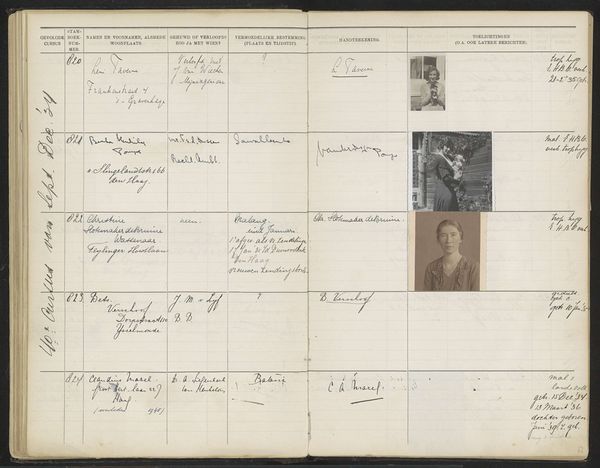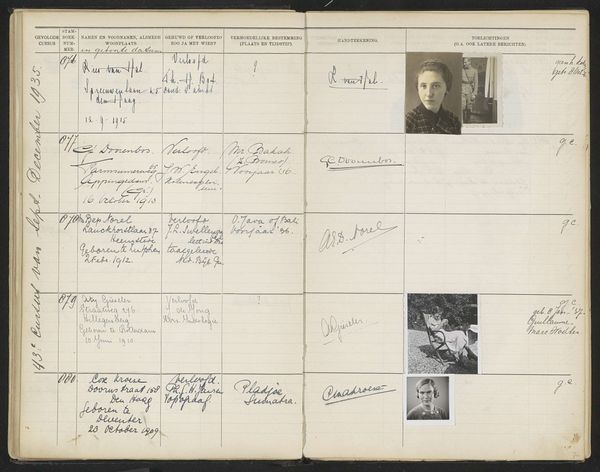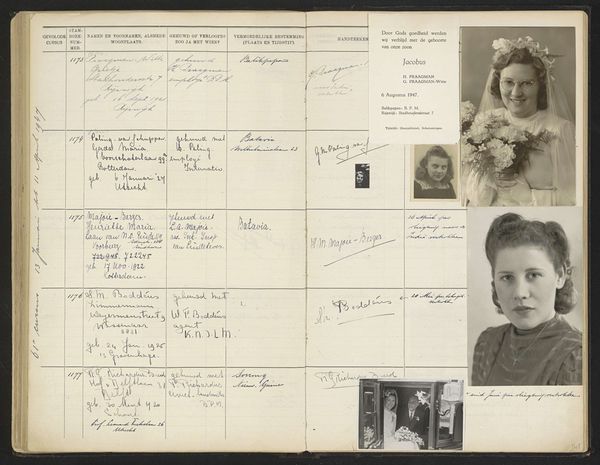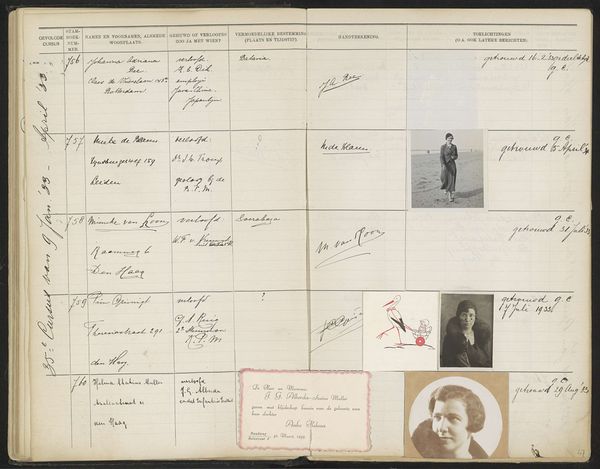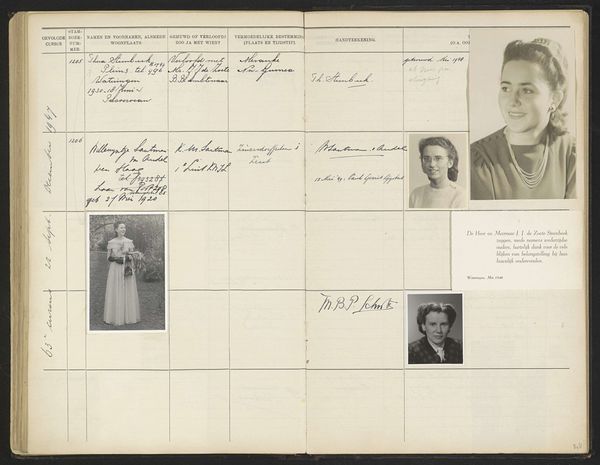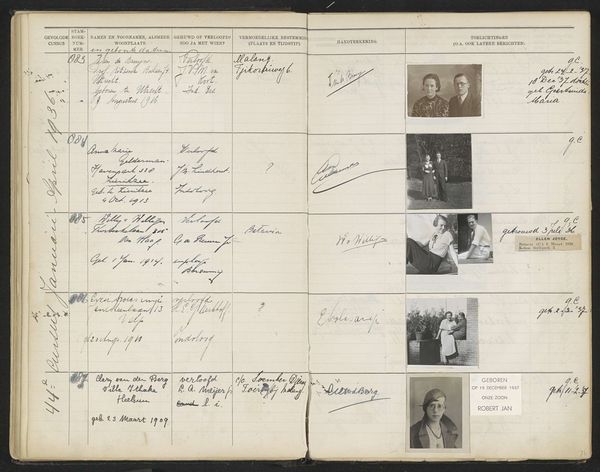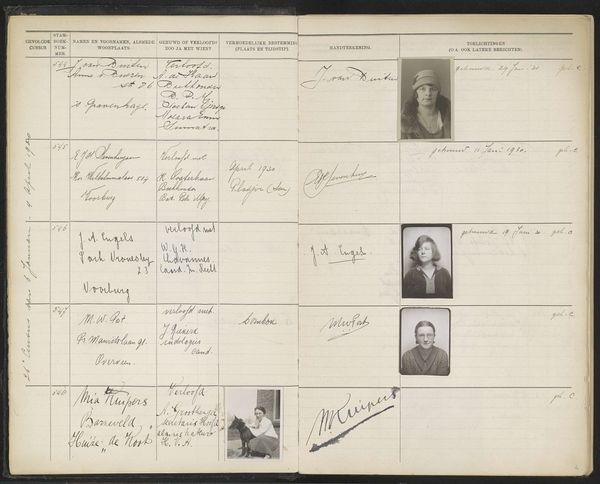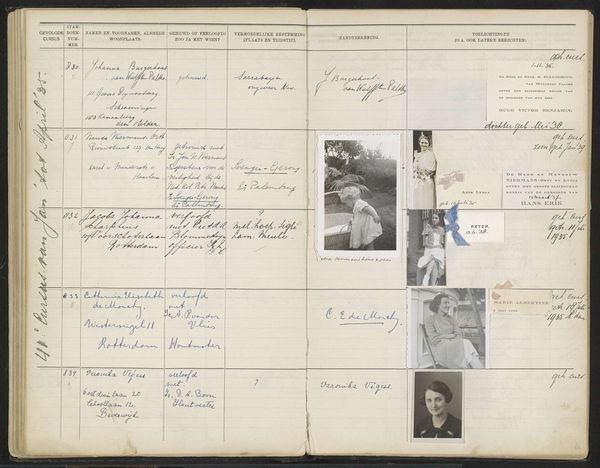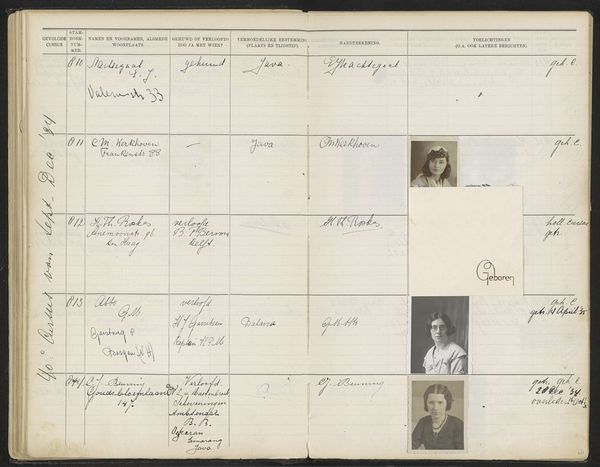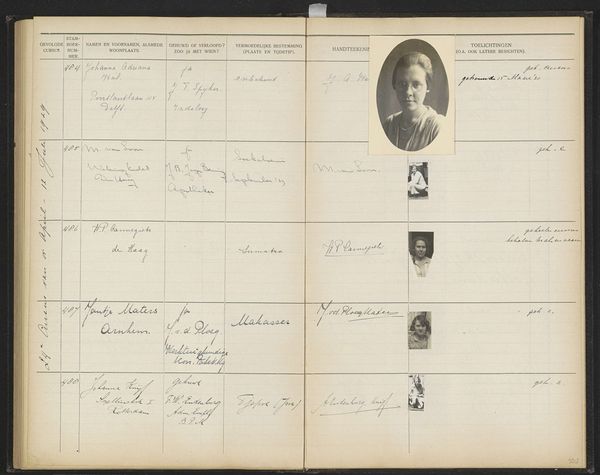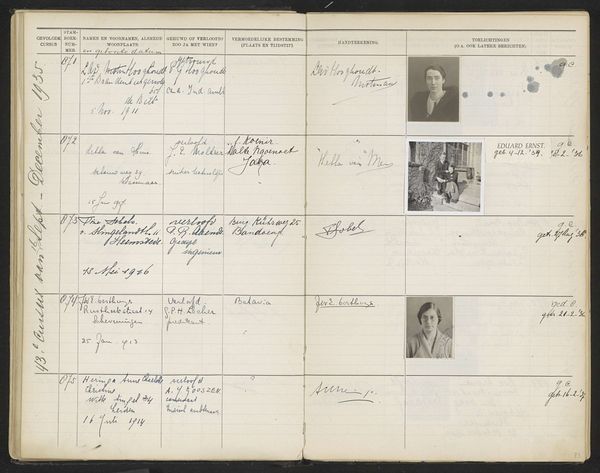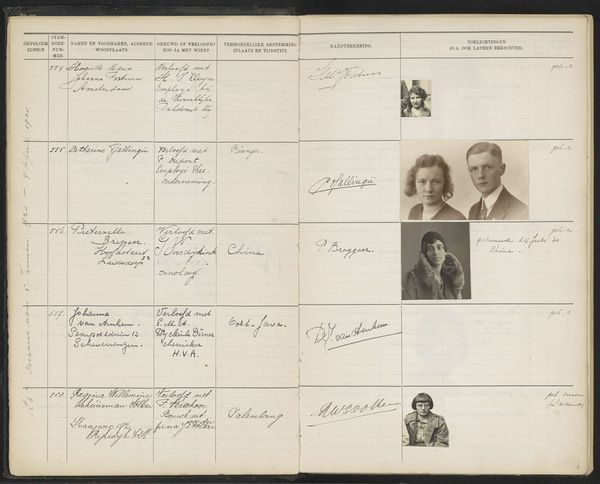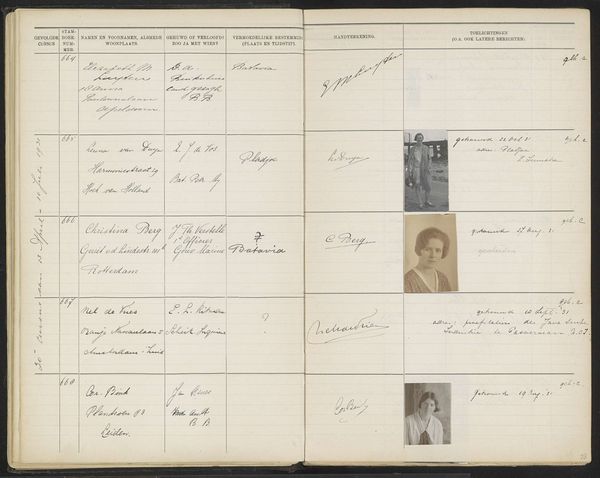
Blad 138 uit Stamboek van de leerlingen der Koloniale School voor Meisjes en Vrouwen te 's-Gravenhage deel II (1930-1949) Possibly 1946 - 1949
0:00
0:00
drawing, mixed-media, paper, photography, ink
#
portrait
#
drawing
#
comic strip sketch
#
aged paper
#
mixed-media
#
parchment
#
paper
#
tea stained
#
photography
#
personal sketchbook
#
ink
#
ink colored
#
sketchbook drawing
#
storyboard and sketchbook work
#
sketchbook art
#
columned text
Dimensions: height 337 mm, width 435 mm
Copyright: Rijks Museum: Open Domain
This page from the Stamboek, or registry, of the Koloniale School voor Meisjes en Vrouwen in The Hague, made between 1930 and 1949, presents a series of images of young women training for colonial service, but within it, one image stands out: a colorful, cartoonish bicycle with a sign on its rear, an anachronistic image among the passport photos. The bicycle, a symbol of modernity and progress, here takes on a particular resonance. The bicycle’s image has traversed continents and centuries, from Leonardo da Vinci’s sketches of early machines to its widespread adoption in Europe and the Americas. The bicycle appears here not only as a mode of transport but as an emblem of self-reliance and independence, reflecting these young women's aspirations. However, one can't ignore the colonial context in which it appears. The bicycle is set against a backdrop of colonialism, suggesting both the excitement and the potential exploitation inherent in these women's futures. We see a complex interplay of memory, progress, and perhaps, a subconscious recognition of the uncertain road ahead. The bicycle, innocent as it seems, invites us to reflect on the cyclical, often contradictory nature of progress.
Comments
No comments
Be the first to comment and join the conversation on the ultimate creative platform.
